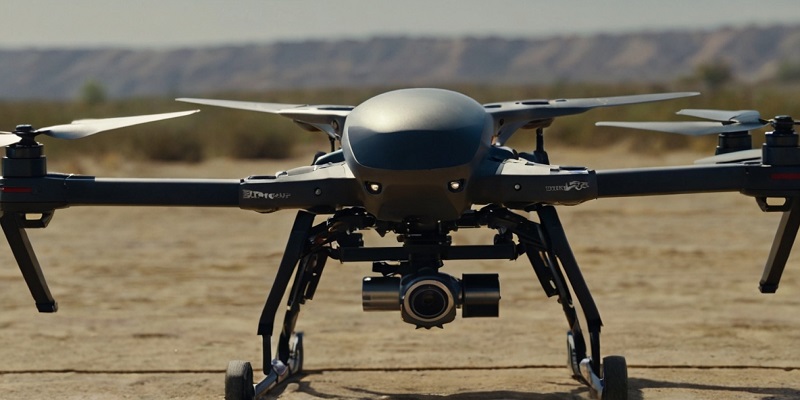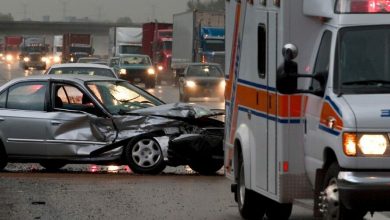Pilotless Drones: The Cutting-Edge of Unmanned Aerial Vehicles

Pilotless drones have surged in popularity, revolutionizing various sectors with their versatility and efficiency. These unmanned aerial vehicles (UAVs) are at the forefront of technological innovation, offering unprecedented capabilities that extend beyond traditional aviation. This article explores the advancements, applications, benefits, and future prospects of pilotless drones, highlighting their transformative impact on society.
The Evolution of Pilotless Drones
Early Beginnings
The concept of unmanned aerial vehicles dates back to the early 20th century. Initial developments focused on military applications, with early prototypes serving as target practice for training purposes. The first recorded use of a pilotless drone was during World War I, with the introduction of the Kettering Bug.
Technological Advancements
Over the decades, significant technological advancements have propelled the development of pilotless drones. The integration of GPS, advanced sensors, and artificial intelligence (AI) has enhanced their capabilities. Modern drones are equipped with sophisticated navigation systems, high-resolution cameras, and powerful processors, enabling them to perform complex tasks with precision and efficiency.
Applications of Pilotless Drones
Military and Defense
One of the most prominent applications of pilotless drones is in the military and defense sector. Drones are used for surveillance, reconnaissance, and targeted strikes, minimizing the risk to human personnel. They provide real-time intelligence, enabling military forces to make informed decisions on the battlefield. Additionally, drones are used for search and rescue missions, delivering supplies to remote areas, and monitoring border security.
Agriculture
In agriculture, pilotless drones have revolutionized farming practices. Equipped with multispectral sensors, drones can monitor crop health, assess soil conditions, and detect pest infestations. This data allows farmers to optimize irrigation, apply fertilizers precisely, and reduce the use of pesticides. Drones also assist in planting seeds and spraying crops, increasing efficiency and productivity while reducing labor costs.
Environmental Monitoring
Pilotless drones play a crucial role in environmental monitoring and conservation efforts. They are used to track wildlife populations, monitor deforestation, and assess the impact of climate change. Drones can capture high-resolution images and collect data in inaccessible or hazardous areas, providing valuable insights for researchers and conservationists. This technology enables more effective management of natural resources and helps in the preservation of endangered species.
Infrastructure Inspection
Inspecting infrastructure such as bridges, power lines, and pipelines can be challenging and dangerous. Pilotless drones offer a safer and more efficient solution. Equipped with high-definition cameras and thermal sensors, drones can identify structural issues, detect leaks, and assess damage. This reduces the need for manual inspections, minimizing risks and costs while ensuring timely maintenance and repairs.
Delivery Services
The concept of drone delivery has gained traction in recent years. Companies like Amazon and UPS are exploring the use of pilotless drones to deliver packages to customers’ doorsteps. Drones can navigate through congested urban areas and reach remote locations quickly, reducing delivery times and costs. This technology has the potential to revolutionize the logistics industry, making same-day deliveries more accessible and efficient.
Benefits of Pilotless Drones
Increased Efficiency
Pilotless drones offer increased efficiency in various applications. Their ability to operate autonomously, navigate challenging terrains, and perform tasks with precision reduces the need for manual labor and increases productivity. Drones can cover large areas quickly, providing real-time data and insights that enable faster decision-making and response times.
Cost Savings
The use of pilotless drones can result in significant cost savings. In agriculture, drones help optimize resource usage, reducing the need for water, fertilizers, and pesticides. In infrastructure inspection, drones eliminate the need for expensive scaffolding or helicopters. Additionally, drones can perform tasks that would otherwise require costly human labor, such as monitoring wildlife or delivering packages.
Enhanced Safety
Safety is a critical consideration in many industries. Pilotless drones mitigate risks by performing tasks in hazardous environments or situations. For example, drones can inspect power lines or pipelines without exposing workers to dangerous conditions. In search and rescue missions, drones can access remote or disaster-stricken areas, providing vital information and supplies without putting human lives at risk.
Precision and Accuracy
Equipped with advanced sensors and AI algorithms, pilotless drones can perform tasks with high precision and accuracy. In agriculture, drones can identify specific areas that require attention, enabling targeted treatments. In infrastructure inspection, drones can detect minute cracks or defects that may go unnoticed by human inspectors. This level of precision ensures better outcomes and reduces the likelihood of errors or oversights.
Future Prospects of Pilotless Drones
Integration with AI and Machine Learning
The future of pilotless drones lies in the integration of AI and machine learning technologies. These advancements will enable drones to learn from their experiences, adapt to changing conditions, and make autonomous decisions. AI-powered drones can analyze vast amounts of data in real-time, identifying patterns and anomalies that may not be apparent to human operators. This will enhance their capabilities and expand their applications across various industries.
Urban Air Mobility
Urban air mobility is an emerging concept that envisions the use of drones for passenger transportation within urban areas. Companies like Uber and Airbus are exploring the development of pilotless air taxis that can transport passengers efficiently and safely. This could alleviate traffic congestion, reduce commute times, and provide a sustainable alternative to traditional transportation methods. While regulatory and infrastructure challenges remain, the potential benefits of urban air mobility are immense.
Advancements in Battery Technology
Battery technology is a critical factor in the performance and endurance of pilotless drones. Ongoing research aims to develop more efficient and longer-lasting batteries, enabling drones to fly for extended periods and cover greater distances. Improvements in battery technology will enhance the range, payload capacity, and overall capabilities of drones, making them more versatile and reliable for various applications.
Regulatory Frameworks
The widespread adoption of pilotless drones requires the establishment of comprehensive regulatory frameworks. Governments and aviation authorities are working to develop regulations that ensure the safe and responsible use of drones. These regulations address issues such as airspace management, privacy concerns, and safety standards. A well-defined regulatory framework will foster innovation, promote public trust, and enable the seamless integration of drones into our daily lives.
Conclusion
Pilotless drones represent the cutting-edge of unmanned aerial vehicles, offering transformative capabilities across various sectors. From military and defense to agriculture, environmental monitoring, infrastructure inspection, and delivery services, drones have revolutionized traditional practices and opened new possibilities. Their increased efficiency, cost savings, enhanced safety, and precision make them invaluable tools in our modern world.
As technology continues to advance, the future prospects of pilotless drones are promising. The integration of AI, advancements in battery technology, and the development of urban air mobility solutions will further expand their applications and impact. However, to fully realize the potential of pilotless drones, it is essential to establish robust regulatory frameworks that ensure their safe and responsible use.





